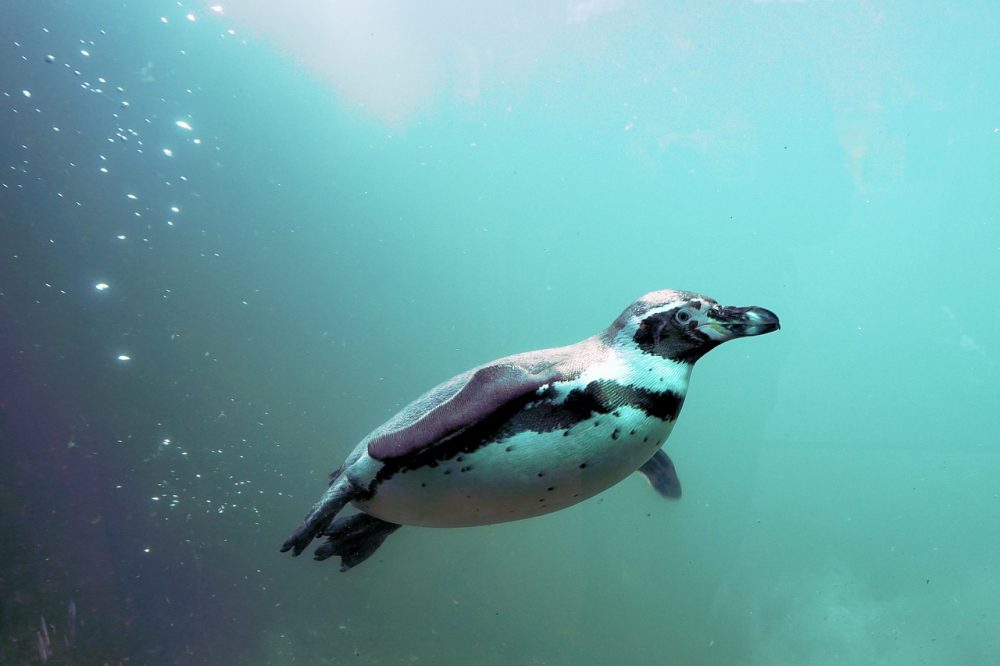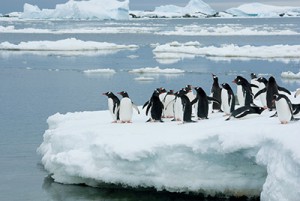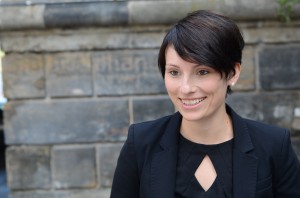
This article is about the customer community penguin manager John who is leading his customer penguin community through the four steps of the community lifecycle*. Within the article the reader will learn what customer community tasks a community manager has to do in the first step of the community lifecycle: the inception phase (learn more about our customer community approach here).
Nearly all customer communities pass through a community lifecycle that consists of the same phases:
Inception – Establishment – Maturity – Mitosis. This post will deal with the most important aspect in the inception phase: reaching a critical mass.
So I will use the same aquatic, flightless birds as a metaphor that Professor John P. Kotter employs in the area of change management: penguins.

Imagine a huddle of penguins atop a sheet of ice. It is drifting through the ocean water, which is where there is something penguins are anxious to have: fish. Not only will the penguins catch a lot more fish if they leave the ice, they will also catch them faster. Penguins can move around much better in water than out of it. It is clearly to their advantage to get in the water, but most penguins are unaware of this and try to catch their fish from the ice.
There is one penguin – we’ll call him John – who is in charge of water activities and wants to persuade the penguins to get in the water. We could say John is the Customer Community Manager Penguin. John takes his responsibility very seriously and focuses his efforts on the area in the ocean where all his penguins jumped into the water last week. He has created posters and organized big customer community events. But he is not getting any more members in the water than before. What is he doing wrong? John’s customer penguin community is in the inception phase. This means he presently has only a few members in the water. To organize big events, he needs a lot more members than he has at the moment.
John is learning very fast though. He is concentrating more on the specific needs of his customer community and is thus planning much smaller activities. He is contacting other penguins directly, which improves conversions, and is chatting with members to build personal relationships. His efforts are starting to produce the first results. A small group of new penguins are jumping into the water. They instantly realize the benefits of fishing in the water over fishing from the ice. John’s micro activities are working. More and more penguins are getting in the water and encouraging their friends to do the same. After a short while, skeptical penguins are no longer willing to stay put on the ice because they are missing out on what’s being discussed in the water. John’s customer community has literally demonstrated the penguin effect.
The penguin community has also reached a critical mass – more than 50% of growth and activities are generated by the community. John can now shift his focus to efforts on the macro level.
Summary
If you are trying to establish a new customer community, start small and heed the following advice:
1. Take actions that correspond to your customer community’s current phase.
During the inception phase:
2. Invite members to join the community personally
3. Build a group of multipliers that will start discussions and invite new people
4. Show members the benefit of your community
5. Initiate discussions on topics members will be interested in
6. Prompt members to participate in discussions
7. Build relationships with members
8. After reaching a critical mass, start activities for the establishment phase
I’ll explain what John can do grow his community in the establishment phase in my next blog post.
[hr]
About the author:
Sandra Brückner, who studied business informatics at the Technical University of Dresden, has worked as social business consultant since 2012. She recently joined the Berlin-based social business consultancy and technology provider Pokeshot///SMZ, where she leverages her extensive intranet and community expertise to consult organizations on how to optimize their change management and community management processes.
*The community lifecycle model presented in this article is based on the works of Iriberri, A. & Leroy, G. (2009): A Life-Cycle Perspective on Online Community Success and Millington, R. (2013): The Online Community Lifecycle.

5 thoughts on “Customer Community Tasks [1/4] – Reaching the critical mass or how to get my penguins in the water”
Comments are closed.